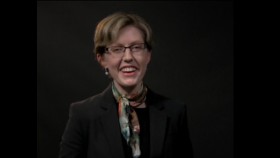Seeing faces
Most of us have had the experience of seeing faces in clouds, tree bark and the shadows of spooky places. This is because our brains place a special emphasis on faces compared to most other visual stimuli. From an evolutionary point of view, being able to quickly recognise different faces is a huge advantage. If one rabbit looks the same as another to a caveman it really doesn’t matter because he’s going to chase them both with a big club. But when it comes to people, we have to be much more selective who we chase with clubs and who we invite in to share the rabbit stew. This vital face recognition task is performed by a specialised region of the visual cortex called the fusiform face area.
The ability to recognise faces and the cognitive and neurological mechanisms that underlie it, are the area of expertise of Dr Elinor McKone. Her research group focuses on the process of face recognition, how this develops from childhood and conditions such as prosopagnosia that interfere with it. Regarding one aspect of face recognition currently under investigation, she explains that “there are two common mechanisms by which the human visual cortex recognises shapes, including those shapes that make up faces.”
The first, multi-channel narrowband coding, involves having small groups of neurons that respond only to a narrow range within a particular type of visual stimuli. For example, when we judge the angle a straight line makes with the vertical, one group of neurons might be sensitive to lines at 0° to 4°, the next to 2° to 6°, the next to 4° to 8° and so on. Although there is some overlap, the ranges are narrow and a line at 45° will not stimulate any neurones in the first few sets at all.
The second mechanism, two-pool broadband coding, uses only two groups of neurons, but they are each sensitive to a vastly broader range of values. The brain then uses the ratio of the stimulation strength to judge the true angle. In colour for example, the neutral colour white might be coded by equal firing in sets of neurons tuned to red and green. Knowing which mechanism comes into play for each aspect of face recognition is vital in developing an understanding of how the process works at a neurological level.
The obvious approach to studying such processes might at first sight appear to be some kind of brain imaging technique such as functional magnetic resonance imaging (fMRI). However although fMRI has contributed enormously to our understanding of brain function, the best spatial resolution that can be achieved is of the order of a couple of millimetres cubed. The individual neurons involved in face recognition are over a million times smaller than this, so despite the power of fMRI as a technique, there are many questions about neural coding it can’t answer. In the case of the underlying mechanisms of face recognition, answering these questions requires some cleverly designed traditional psychological experiments.
One experimental technique used by Dr McKone’s group works by taking advantage of a phenomena called an adaptation aftereffect. Adaptation is the process by which a repeated stimulus is gradually ignored. A perfect example of this is how after a while, we no longer hear a ticking clock. Our brains become used to the stimulus and learn to ignore it. A similar process can happen with various visual features used to recognise faces such as the placement of the eyes or the width of the face. If someone lives amongst people who all have wide faces they adapt to this and it becomes 'normal'. Then if they see someone with an average face it can look exceedingly narrow. The important thing about adaptation is that the effects it induces are subtlety different for each of the two neural selection processes.
In two-pool broadband selection systems that use just two broad sensitivities, habituation to an extreme shifts all perception values, even those well away from the stimulus. In multi-channel narrowband selection systems, habituation to a particular value has very little effect on the same stimuli with a value well outside this range. You can test for yourself which mechanism is involved in recognising the width/length proportion of a face using the images to the right.
Researchers use tools like these to probe the mechanisms of many aspects of visual function. The group are also looking into how these mechanisms vary between looking at faces and other sorts of objects like horses and houses. Each test provides a vital piece of the jigsaw in piecing together a better understanding of how our brains work.









